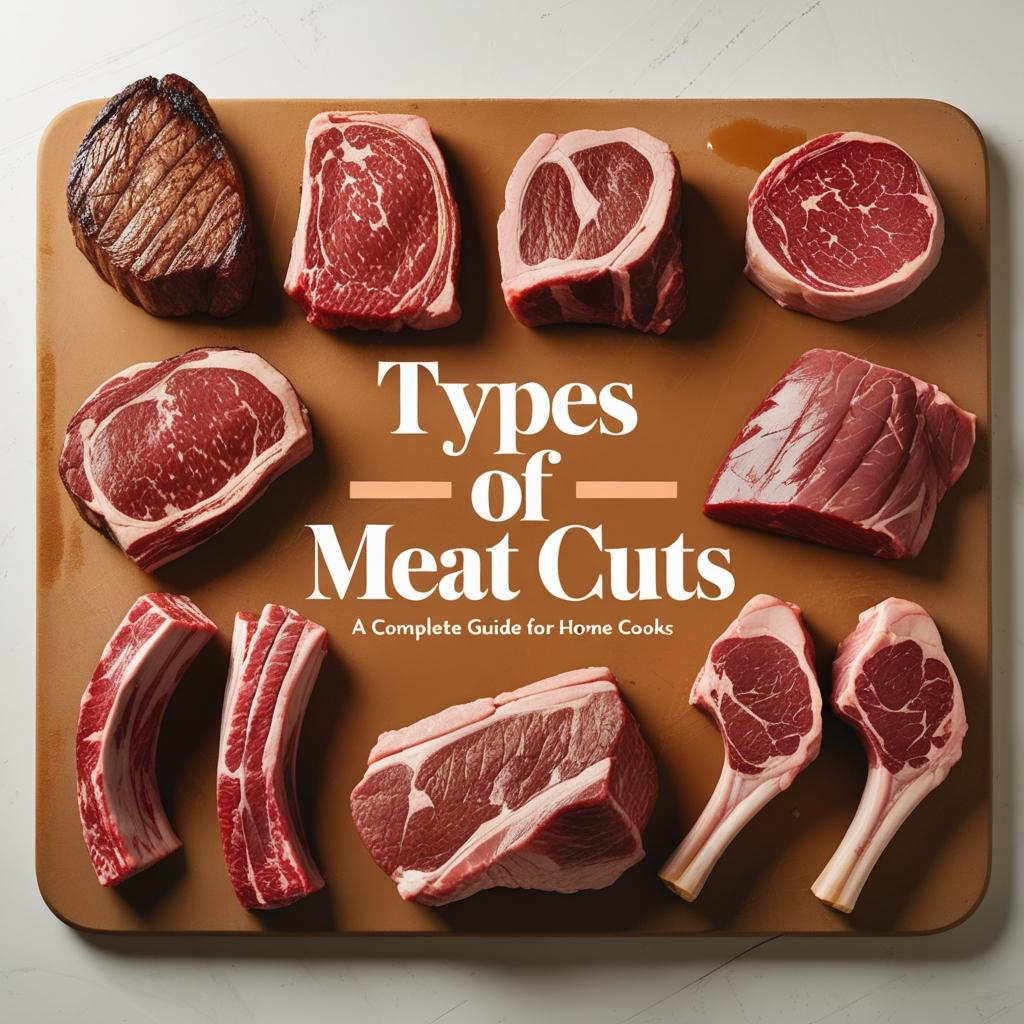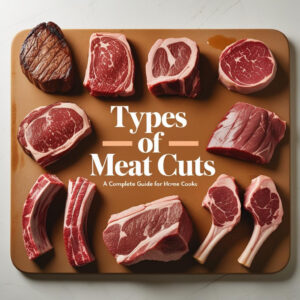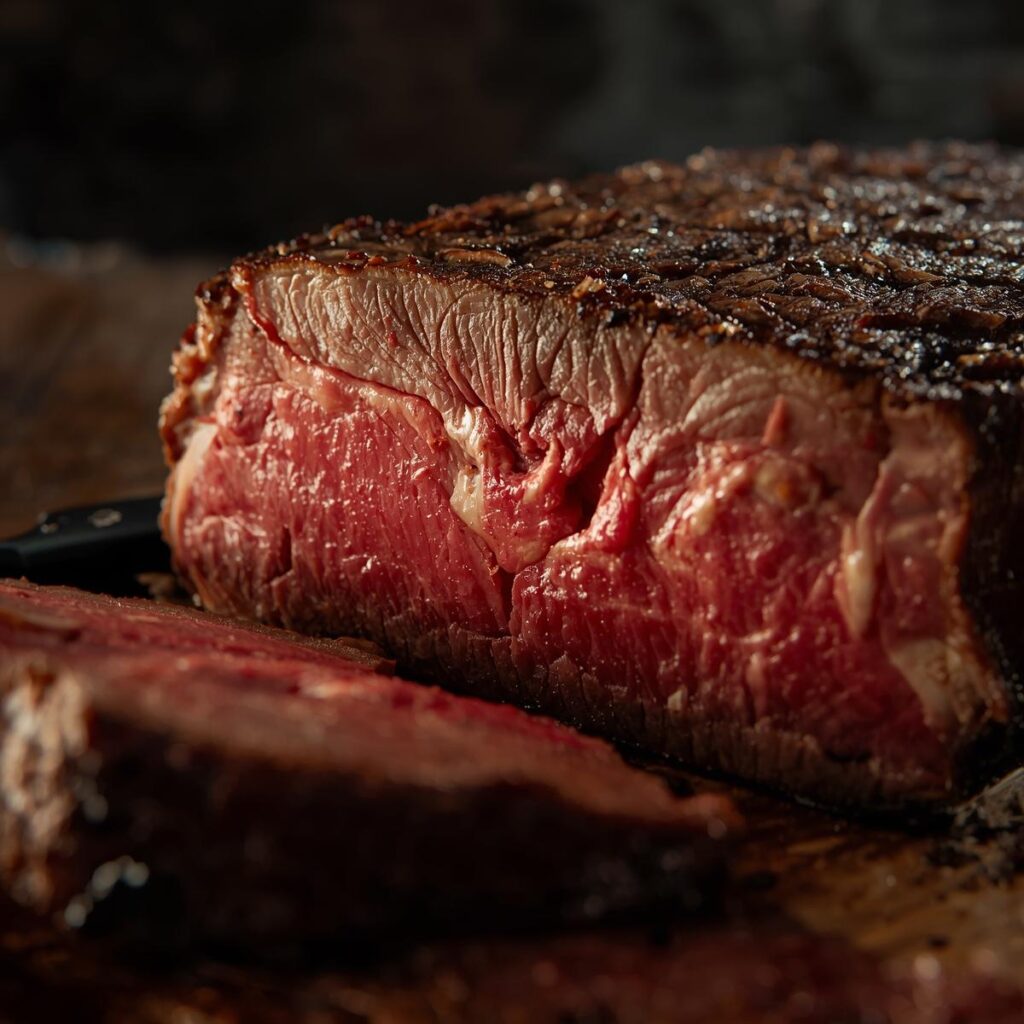Types of Meat Cuts: A Complete Guide for the Home Cook
Navigating the butcher counter can feel like learning a new language. With terms like brisket, chuck, flank, and sirloin, it’s easy to get confused about which cut is best for your recipe. Understanding the different Types of Meat Cuts is the first step to becoming a more confident and successful cook. The right cut can make the difference between a tough, dry meal and a tender, flavorful one.
This comprehensive guide will demystify the world of meat cuts. We’ll explore the primary primal cuts of beef, pork, and poultry, and then dive into the most popular sub-primal cuts, explaining their characteristics, best cooking methods, and a few pro tips. By the end, you’ll be able to walk into any butcher shop and know exactly what you’re looking for, no matter the meal.
Understanding Primal vs. Sub-Primal Cuts
Before we get into the specifics, it’s important to understand the basic terminology.
- Primal Cuts: These are the large, primary sections of an animal from which smaller cuts are taken. They are the first cuts made by the butcher and are often sold to restaurants or processors.
- Sub-Primal Cuts: These are the individual steaks, roasts, and other cuts that are carved from the primal cuts. This is what you see at the meat counter and what you’ll be cooking.
Beef Cuts Explained
Beef is one of the most popular meats for grilling, smoking, and roasting. It is divided into several primal cuts, each with unique characteristics.
Chuck: The Flavorful, Versatile Cut
The chuck comes from the shoulder of the cow. It’s a well-exercised muscle, which means it’s packed with flavor but can be tough.
- Characteristics: High in fat and connective tissue. Best for low-and-slow cooking methods.
- Popular Sub-Primal Cuts:
- Chuck Roast: Perfect for pot roast, stew, or pulled beef. The slow cooking process breaks down the collagen, making it incredibly tender.
- Flat Iron Steak: A surprisingly tender cut from the chuck. It has great flavor and is excellent for grilling or searing.
- Ground Chuck: The go-to for many burgers and meatballs due to its balanced fat content.
Internal Link Suggestion: For a deeper look, see our Chuck Steak: The Ultimate Guide.
Rib: The King of Flavor and Tenderness
The rib primal cut is located from the sixth to the twelfth rib. It is known for its incredible marbling and tenderness.
- Characteristics: Highly marbled, making it very tender and flavorful. Great for high-heat cooking.
- Popular Sub-Primal Cuts:
- Ribeye Steak: A steak cut from the rib roast. It’s known for its rich flavor and tenderness due to the marbling. Perfect for grilling or pan-searing.
- Prime Rib Roast: The bone-in rib roast, often used for special occasions. It’s best slow-roasted in the oven.
- Short Ribs: These are highly marbled and full of flavor. Best braised or smoked low and slow.
Loin: The Most Tender Cuts
The loin is located along the spine behind the ribs. It’s a less-exercised muscle, resulting in some of the most tender and expensive cuts of beef.
- Characteristics: Very tender, with a fine texture and mild flavor. Best for quick, high-heat cooking.
- Popular Sub-Primal Cuts:
- Tenderloin (Filet Mignon): The most tender cut of beef, with a buttery texture and mild flavor. Best seared and then finished with indirect heat.
- New York Strip: A popular steak known for its balance of tenderness and robust beefy flavor. Excellent for grilling.
- Porterhouse & T-Bone: These steaks include a T-shaped bone with a piece of both the tenderloin and the New York strip on either side.
Internal Link Suggestion: To master these cuts, check out our guide on The T-Bone Steak or our detailed post on Filet Mignon.
Sirloin: The Lean All-Rounder
The sirloin is located just behind the loin. It is a leaner cut that offers a great balance of flavor and tenderness at a more affordable price.
- Characteristics: Less marbling than the rib and loin. It’s a versatile cut that can be grilled, pan-seared, or roasted.
- Popular Sub-Primal Cuts:
- Top Sirloin: A versatile steak that’s great for grilling or pan-searing. It’s tender but has a strong beefy flavor.
- Tri-Tip: A triangular cut from the bottom sirloin. It’s popular in California for grilling and smoking.
- Picanha (Sirloin Cap): A Brazilian favorite with a thick fat cap that renders beautifully during cooking. It’s juicy and flavorful.
Internal Link Suggestion: Learn more about this popular cut in our Picanha Steak: The Ultimate Guide.
Brisket: The Ultimate Challenge
The brisket is from the cow’s breast and is one of the toughest primal cuts. However, when cooked correctly, it yields some of the most flavorful and tender BBQ.
- Characteristics: Very tough due to high amounts of connective tissue. It requires low-and-slow cooking to become tender.
- Popular Sub-Primal Cuts:
- Flat: The leaner, flatter part of the brisket.
- Point: The thicker, fattier part of the brisket.
- Corned Beef: A brisket that has been brined and is the star of many St. Patrick’s Day meals.
Internal Link Suggestion: Brisket is a complex but rewarding cut. Master it with our guide on How to Smoke a Brisket (Texas-style).
Other Beef Cuts:
- Plate: The short plate yields cuts like skirt steak, which is perfect for fajitas, and hanger steak.
- Flank: The flank steak is a lean, flavorful cut from the abdomen. It’s best when marinated and sliced thinly against the grain.
- Shank: The shank is full of tough connective tissue and is best used for broth or braising.
Pork Cuts Explained
Pork is a favorite for grilling and smoking. Like beef, its cuts vary in tenderness and fat content.
Pork Shoulder (Pork Butt): The Pulled Pork Champion
The pork shoulder is from the upper part of the front leg and is a tough but incredibly flavorful cut.
- Characteristics: High in fat and connective tissue. Perfect for low-and-slow cooking.
- Popular Sub-Primal Cuts:
- Boston Butt: The upper part of the shoulder. This is the go-to cut for pulled pork due to its high fat content and rich flavor.
- Pork Picnic: The lower part of the shoulder, often sold with the skin on. It’s also great for pulled pork.
Pork Loin: The Lean and Versatile Cut
The pork loin is a long, lean muscle that runs along the back of the pig. It’s one of the most versatile cuts.
- Characteristics: Very lean and tender. Can be roasted whole or cut into steaks and chops.
- Popular Sub-Primal Cuts:
- Pork Chops: Cut from the loin, they are great for grilling or pan-searing.
- Pork Roast: The entire loin, which can be roasted whole for a delicious centerpiece meal.
- Pork Tenderloin: The leanest and most tender cut of pork. It cooks very quickly and is great for grilling or pan-searing.
Internal Link Suggestion: Learn the difference between these cuts in our post on Pork Tenderloin vs. Pork Loin.
Pork Ribs: The BBQ Classic
Pork ribs are a classic BBQ cut, prized for their rich flavor and tenderness.
- Characteristics: Tough connective tissue, but when cooked low and slow, they become fall-off-the-bone tender.
- Popular Sub-Primal Cuts:
- Baby Back Ribs: These come from the top of the rib cage. They are smaller and leaner than spare ribs.
- Spare Ribs: These come from the belly area. They are larger, meatier, and have more fat than baby back ribs.
- St. Louis-Style Ribs: Spare ribs that have been trimmed into a neater, rectangular rack.
Internal Link Suggestion: Master your ribs with our guide to Pork Ribs: Baby Back, Spare, and St. Louis Styles.
Other Pork Cuts:
- Pork Belly: A very fatty cut from the belly of the pig. It’s the cut that bacon comes from, but it can also be roasted for delicious burnt ends.
- Ham: The hind leg of the pig, typically cured and smoked.
Poultry Cuts Explained
Poultry is a healthy, versatile protein. Chicken and turkey are most popular for BBQ.
Chicken Cuts:
- Whole Chicken: A great option for smoking or roasting. The different parts cook at different rates, so a method like spatchcocking can help.
- Chicken Breast: The leanest cut, it cooks very quickly and can dry out if overcooked.
- Chicken Thighs: A flavorful, juicier cut with more fat than the breast. Great for grilling.
- Chicken Wings: A party favorite, wings are perfect for smoking or grilling.
Internal Link Suggestion: Learn to grill chicken with our post on Grilled Chicken Thighs: A Beginner’s Guide.
Turkey Cuts:
- Whole Turkey: The classic for Thanksgiving. Best cooked with a combination of smoking and roasting to achieve juicy meat and crispy skin.
- Turkey Breast: A large, lean cut that is a great alternative to a whole turkey.
- Turkey Legs (or drumsticks): A flavorful cut that is great for smoking.
Tips for Buying and Cooking Any Cut
- Know Your Butcher: A good butcher can provide you with fresh, high-quality meat and expert advice on the best cuts and cooking methods.
- Marbling is Key: For high-heat grilling, marbling (the white flecks of fat in the meat) is your friend. It melts during cooking, providing flavor and juiciness.
- Cook for the Cut: The most important rule is to match your cooking method to the cut of meat. Tougher, fattier cuts need low-and-slow cooking to break down collagen. Tender, leaner cuts are best for quick, high-heat methods.
- Slice Against the Grain: For tougher cuts like flank steak or brisket, always slice against the grain of the meat. This shortens the muscle fibers, making the meat more tender to chew.
External Link Suggestion: The National Cattlemen’s Beef Association website provides a wealth of information on different beef cuts and cooking methods.
External Link Suggestion: The National Pork Board also has an excellent resource for understanding all the different cuts of pork.
Conclusion
Understanding the different Types of Meat Cuts is a fundamental skill for any aspiring cook. By learning about primal and sub-primal cuts, you can make informed decisions at the butcher counter and select the perfect cut for your desired recipe. Whether you’re a fan of a well-marbled ribeye, a smoky pulled pork, or a juicy roasted chicken, knowing your cuts will empower you to create delicious, memorable meals every time. So, the next time you’re at the store, take a moment to consider the cut, and choose the one that’s just right for your next culinary adventure.
- FAQs:
- What is the most tender cut of beef? The most tender cut of beef is the tenderloin, from which filet mignon is cut.
- What is the difference between a pork loin and a pork tenderloin? A pork loin is a large, wide cut, while a pork tenderloin is a long, thin muscle. The tenderloin is much more tender and cooks faster than the loin.
- What cuts are best for pulled pork? The best cuts for pulled pork are the Boston butt (pork shoulder) and the pork picnic, as their high fat content and connective tissue break down beautifully during a long, slow cook.
- How do I know what cooking method to use for a cut? Generally, tougher cuts with more connective tissue (like brisket or chuck) require low-and-slow cooking, while tender, leaner cuts (like tenderloin or sirloin) are best for high-heat, quick cooking.
- Why is marbling important? Marbling refers to the white flecks of fat within the muscle. This fat melts during cooking, adding flavor and moisture to the meat, which is especially important for high-heat grilling.








Pingback: Pulled Pork Perfection: Ultimate Low and Slow Cooking Guide (2025)
Pingback: Beef vs Pork BBQ: The Ultimate Guide to Choosing Your Meat for 2026
Pingback: The Only 4 Knives You Need for Meat Prep: Your Ultimate Guide